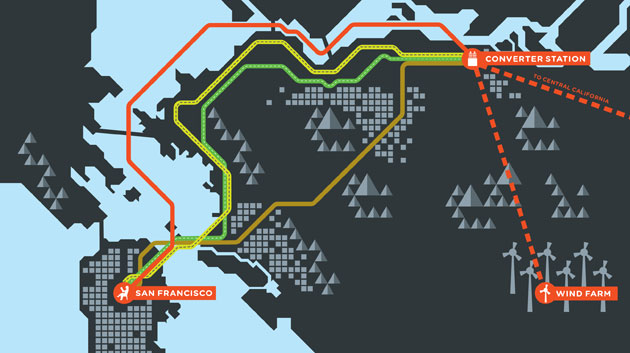 Deliver Clean Energy to Distant CitiesMar 23, 2009 - Bryant Urstadt - Wired Magazine
ProblemBuilding wind turbines and solar farms in the middle of nowhere sounds great. But it's not easy to move all that clean energy to the people. Obama just signed into law $6 billion in loan guarantees for energy projects, including new transmission lines. But constructing those lines will require the approval of landowners and city planners, who want the electricity but not the unsightly high-voltage wires strung across their property. Make Conservation Simple (and Easy) Problem Building wind turbines and solar farms in the middle of nowhere sounds great. But it's not easy to move all that clean energy to the people. Obama just signed into law $6 billion in loan guarantees for energy projects, including new transmission lines. But constructing those lines will require the approval of landowners and city planners, who want the electricity but not the unsightly high-voltage wires strung across their property. Solution Go underground—or underwater. The Trans Bay Cable will link San Francisco to 400 megawatts of power—some from the Altamont Pass wind farms near Livermore, California, and the rest from other sources throughout the state. Set to open in 2010, it's a $500 million project that everyone in the area wanted built ... somewhere else. As a result, the planned route looks like the path an escaped convict would take if he wanted to minimize contact with humans, especially of the activist and bureaucratic kind.
Routing the Trans Bay Cable
Illustration: Lamosca |
Email this page to a friend
If you speak another language fluently and you liked this page, make
a contribution by translating
it! For additional translations check out FreeTranslation.com
(Voor vertaling van Engels tot Nederlands)
(For oversettelse fra Engelsk til Norsk)
(Для дополнительных
переводов проверяют
FreeTranslation.com )


